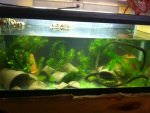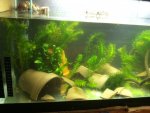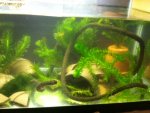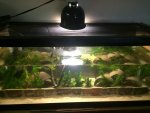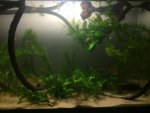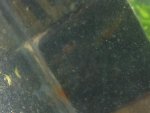Asevernnnn
Active member
- Joined
- Mar 7, 2013
- Messages
- 854
- Reaction score
- 33
- Points
- 28
- Age
- 26
- Location
- ATX
- Country
- United States
- Display Name
- Aaron
During warmer weather(usually 65F+ outside), I usually have a ceiling fan on, and a fan in front of an open window blowing, and always having desk fan on top of the screen lit pointed at an angle into the water, blowing into the water but with creating little disturbance, like this the water is usually around 64, being cooler in the winter/late fall.
Is there any Triturus or Former Triturus that usually has more personality than another, or are they all basically the same personality wise?
Is there any Triturus or Former Triturus that usually has more personality than another, or are they all basically the same personality wise?

